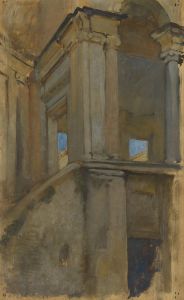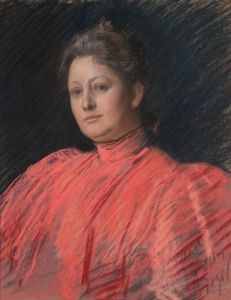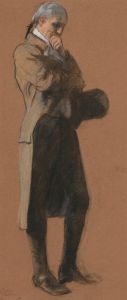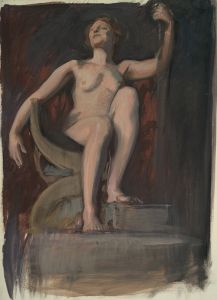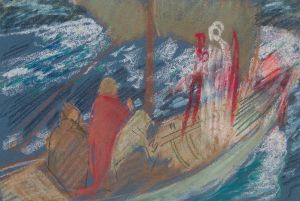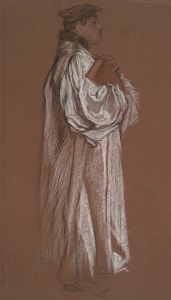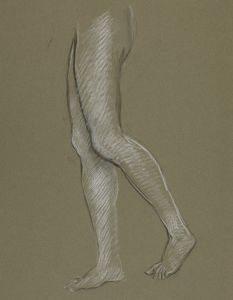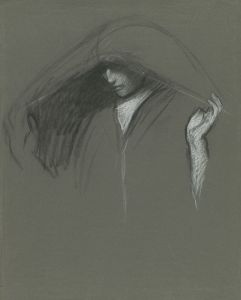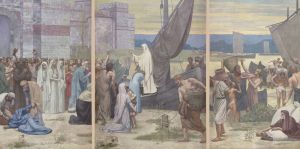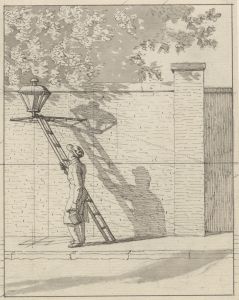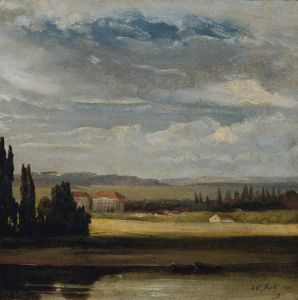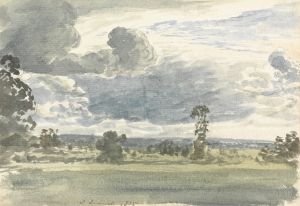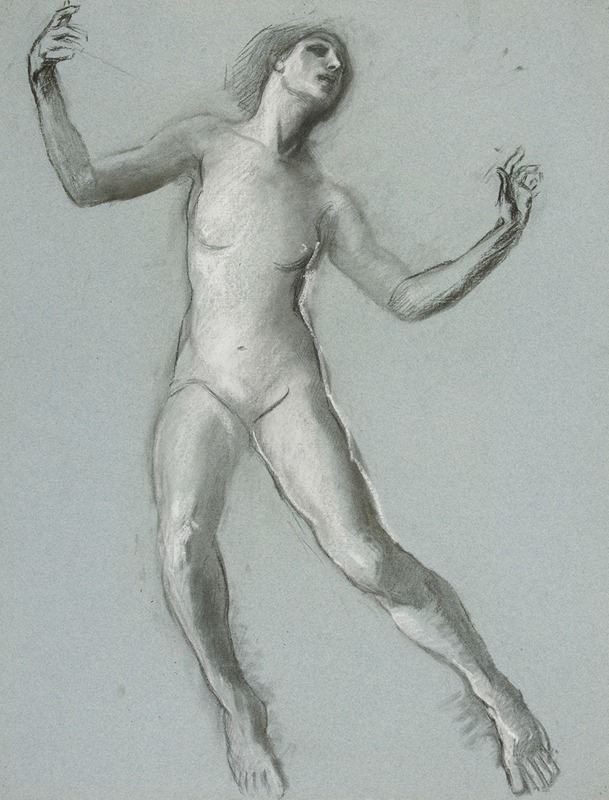
Study for figure of 12 noon in ‘The Hours,’ mural at the state capitol building in Harrisburg, Pennsylvania
A hand-painted replica of Edwin Austin Abbey’s masterpiece Study for figure of 12 noon in ‘The Hours,’ mural at the state capitol building in Harrisburg, Pennsylvania, meticulously crafted by professional artists to capture the true essence of the original. Each piece is created with museum-quality canvas and rare mineral pigments, carefully painted by experienced artists with delicate brushstrokes and rich, layered colors to perfectly recreate the texture of the original artwork. Unlike machine-printed reproductions, this hand-painted version brings the painting to life, infused with the artist’s emotions and skill in every stroke. Whether for personal collection or home decoration, it instantly elevates the artistic atmosphere of any space.
Edwin Austin Abbey's "Study for Figure of 12 Noon in ‘The Hours’" is a preparatory work for a mural located in the Pennsylvania State Capitol in Harrisburg. Abbey, an American artist renowned for his murals and illustrations, was commissioned to create a series of murals for the Pennsylvania State Capitol, which was completed in the early 20th century. The murals are part of a larger decorative scheme that includes works by other artists, contributing to the Capitol's reputation as an architectural and artistic landmark.
Abbey's murals in the Capitol are celebrated for their allegorical and historical themes, reflecting the cultural and political aspirations of Pennsylvania at the time. "The Hours" is one of the significant pieces within this collection, depicting various times of the day personified by human figures. The "Study for Figure of 12 Noon" is a preparatory sketch or painting that Abbey created as part of his process in developing the final mural. Such studies were common practice for muralists, allowing them to experiment with composition, form, and color before executing the full-scale work.
The figure representing 12 Noon in "The Hours" is likely characterized by attributes associated with midday, such as brightness and vitality, reflecting the peak of the day. Abbey's attention to detail and his ability to convey complex allegorical meanings through human figures are evident in this study. His work often drew on historical and literary sources, and he was known for his meticulous research and commitment to authenticity in his depictions.
Abbey's contribution to the Pennsylvania State Capitol is part of a broader tradition of mural painting in American public buildings during the late 19th and early 20th centuries. This period saw a resurgence of interest in large-scale public art, often with themes that emphasized civic pride and historical continuity. Abbey's murals, including "The Hours," are considered exemplary of this movement, combining artistic skill with thematic depth.
The Pennsylvania State Capitol itself, designed by architect Joseph Huston, is an architectural masterpiece that houses these murals. Completed in 1906, the Capitol is noted for its Beaux-Arts style and its rich interior decoration, which includes murals, sculptures, and stained glass. Abbey's work is integral to the Capitol's artistic identity, contributing to its designation as a National Historic Landmark.
Edwin Austin Abbey's legacy as a muralist is significant, and his work in the Pennsylvania State Capitol remains a testament to his skill and vision. The "Study for Figure of 12 Noon in ‘The Hours’" is a valuable piece of this legacy, offering insight into his creative process and the artistic milieu of his time. Abbey's murals continue to be appreciated for their beauty and historical significance, drawing visitors and art enthusiasts to the Capitol to experience their grandeur firsthand.





